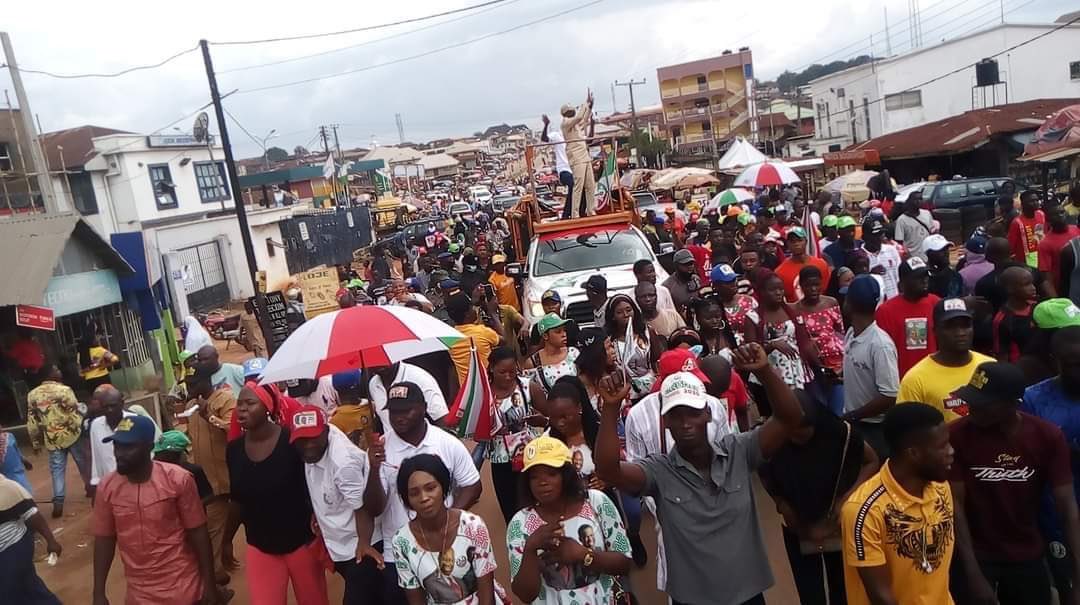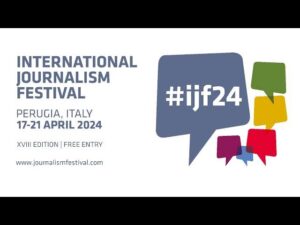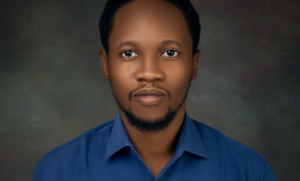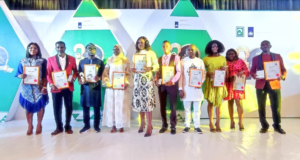Our Correspondent, Aderoju Noah shares insights from an election coverage report and webinar on how journalists can improve coverage of elections.
The answers to two pertinent questions I have been searching for several months easily presented themselves in my inbox last week. The two questions are: How did Nigeria media cover the 2023 general elections? How can it improve its coverage to advance democracy in the country?
Interestingly, both answers came from separate entities, in varying forms and from different countries, and they also did not follow the order of my questions as the answer to my first question didn’t come until a few days after the second was answered.
The answer to how can Nigeria media improve its coverage of elections to advance the country’s democracy came through a Knight Centre for Journalism in the Americas webinar . In contrast, the answer to how the last election was covered was adequately provided by the latest Dataphyte report on the role of media in Nigeria’s 2023 elections.
How did Nigeria media cover the 2023 general election? Answered!
My quest for answers to these questions made me look through post-election statements of international and national election observation missions and civil society organizations like EU EOM Nigeria and Yiaga Africa who lauded the energetic coverage of the election by the media despite the repression and prosecution faced.
According to the preliminary statements and final reports, the media made sure to follow the events of campaigns of popular political contenders, milestones achieved by the electoral body and sharp criticism of their failures, promoted voter information campaigns and fact-checked popular political misinformation and disinformation.
The Dataphyte’s recent report titled “The Media’s Agenda Setting Role. Insights from the Coverage of Nigeria’s 2023 Elections” provided a more satisfying answer to my question with its content analysis of monitored media coverage of the 2023 election for two and half months across 10 national and 36 state media platforms in 18 states.
Expanding the scope of answers provided to the question, the report analysed a total of 32 topical items ranging from security to economy, health, gender, service delivery, education, justice, party politics, elections and others. It further categorized them into two: Programmatic and non-programmatic. Programmatic refers to topics that focus on issues like health, education, and development as opposed to non-programmatic ones that focus on issues like political intrigues and drama, campaign activities and election logistics.
Among many other findings, the report revealed that only 20% of the news items monitored covered programmatic topics while the remaining 80% that clouded the coverage of core issues of development were non-programmatic topics like election logistics, campaign shenanigans and political intrigues.
The report monitored 5999 news items and 39.52% being 2371 news items were national stories, many of the state media also focus more on national stories that happening at the grassroots. The most talked about topic is election logistics, taking 2911 news items, 48.52% of coverage. It was followed by party politics, political campaigns, corruption scandals and controversies, and security in the top five topics.
The least discussed topics include environment, agriculture, oil and gas, infrastructure, lifestyle, family life, housing, health, humanitarian and vulnerable groups.
Looking at the persons/sources most featured in the news, candidates contesting elections were the most featured, followed by INEC leadership, law enforcement, politicians, states and federal governments in the top five, after which civil society organisations, opposition party leadership and others followed. A staggering 82.9% of the featured sources were male, a big contrast to the 4% female representation while the remaining 13% were either not applicable or unknown. Another gender bias revealed is in the focus of the news stories monitored, where an abysmally minute 0.4% of the stories focused on women/gender issues.
Horse race journalism building news avoidance and political apathy
These findings revealed that the Nigerian media employed the popular “horse race journalism” approach of political coverage which focuses on the competition and winning chance of candidates rather than in-depth issues reporting in the last general elections.
Horse race journalism has been criticised by scholars as an approach linked to an uninformed electorate, distrust in politicians, distrust of news outlets, and inaccurate reporting of opinion poll data, a list of scenarios which actively played out in Nigeria last year. It is also infamous for shortchanging minority voices, female participants in politics and in-depth reportage on policy and development issues.
This kind of approach also contributes to news avoidance as citizens’ information needs are not being met. Rather than getting information about resonating issues like how the incoming government will solve the problem of hunger in the land, they are hearing about the huge amount INEC has spent on producing election materials, the ludicrous amount candidate at primaries got their tickets, and how money exchange hands during conventions.
While citizens hustle to survive with less than a dollar daily they hear the millions of dollars lost in corruption cases candidates are involved in and the unbelievable budget these candidates have for their election campaign. While students are struggling with an unstable academic calendar the media is fraught with stories about the certificate saga of a particular candidate.
It is like no one sees the citizens nor acknowledges their struggles, not the politicians, not even the media. It is good that citizens can hear the campaign promises of the political contenders, election progress, and achievement of the electoral bodies. Still, in the end, the decision to vote is made by the electorates whose worries are not allayed and whose voices do not reflect at all in the media coverage of the election.
If they are not important enough to be in the headlines and topics of discussion in the news around elections, how convinced can they be of their importance in the voting process?
How can it improve its coverage to advance democracy in the country? Answered!
Jay Rosen an Associate Professor of Journalism at NYU introduced “The Citizen’s Agenda” approach to political coverage of elections during the recent Knight’s Centre for Journalism webinar in preparation for the upcoming elections in America
The Citizen’s Agenda approach is a model brought about by a project Jay Rosen first did in collaboration with Hearken and has been taught and experimented with by US news organisations during The Advancing Democracy fellowship, of the Solutions Journalism Network with support from Hearken and Trusting the News.
Grounded in the principles of public participation and audience-centric reporting, the model employs an alternative approach of covering what the electorate wants the candidates to be talking about as they compete for their votes.
The approach has outlined, 10 steps to be followed to achieve the coverage style. As an audience-centric approach, the first three steps involve accurately identifying the target audience of the media outfit and repeatedly asking them, in different ways, open questions on what they want the candidates to be discussing during the electioneering period till a robust list of pertinent questions and issues of concern of the audience has been compiled.
The next three steps involve interpreting the list of questions and issues, drafting an agenda with a priority list of issues: testing and revising the draft with insights from audience feedback; and publishing it as a live product on the medium’s platform, launching a content guide for the election coverage period. Following these six sets of steps is the alignment of campaign reporting to connect with the issues the people care about, exploring quality journalism practice to provide in-depth coverage of the issues to inform the electorate.
The media house also needs to regularly coordinate with the published agenda to avoid losing track of the original purpose and ensure to make the politicians adequately answer the questions of the electorates listed in the agenda. Achieving all these will lead to the production of voter guides around the citizens’ agenda and responses from politicians, arming the citizens with adequate information to make informed decisions on election day.
The last step in the model involves the iteration of the listening and audience engagement process and revising the agenda until the campaign ends.
US newsrooms’ experiment with Citizen’s Agenda
Aligning with the impact of the model claimed on the project’s site and a case study published, Natalie van Hoozer, community engagement coordinator for KUNR public radio in Nevada, and Elliot Wade, community reporter at The Current, a non-profit newsroom in Lafayette, Lousiana, during the webinar both provide insights from working with the model.
Hoozer’s KUNR use of the citizen’s agenda model during the 2022 midterm election revealed its audience’s interest in the coverage of environmental issues, where 40% of the audience who answered their survey wanted to know what candidates will do to protect the vulnerable population.
Elliot Wade noted the impact of employing the model in The Continent, aside from shaping their content and how it is covered, increased their brand awareness, and credibility as a source for election coverage. It also helped them provide valuable information and insight for voters, especially their young audience and made politicians care about the concerns of the voters.
Wade and Hoozer both emphasised the importance of engaging the audience extensively through digital means of online and social media polls, virtual events, and in-person events. Constructing open-ended questionnaires and leaving the audience to provide qualitative responses to have a clear picture of topics that trend in the audience engagement is also key, as highlighted by the journalists.
Wade noted that meeting the audience where they are and producing content on what they care about gets the attention of the audience eliminating news avoidance and also harps on the effective use of solutions-oriented reporting
Hugo Balta publisher of Latino News Network. and solutions journalist trainer during the webinar explained that the citizens’ agenda model helps to cover more than elections but even local democracy better. He noted that the alternative approach helps clarify the electorates’ doubts and confusion about the election process and reduces their distrust of political choices.
.





